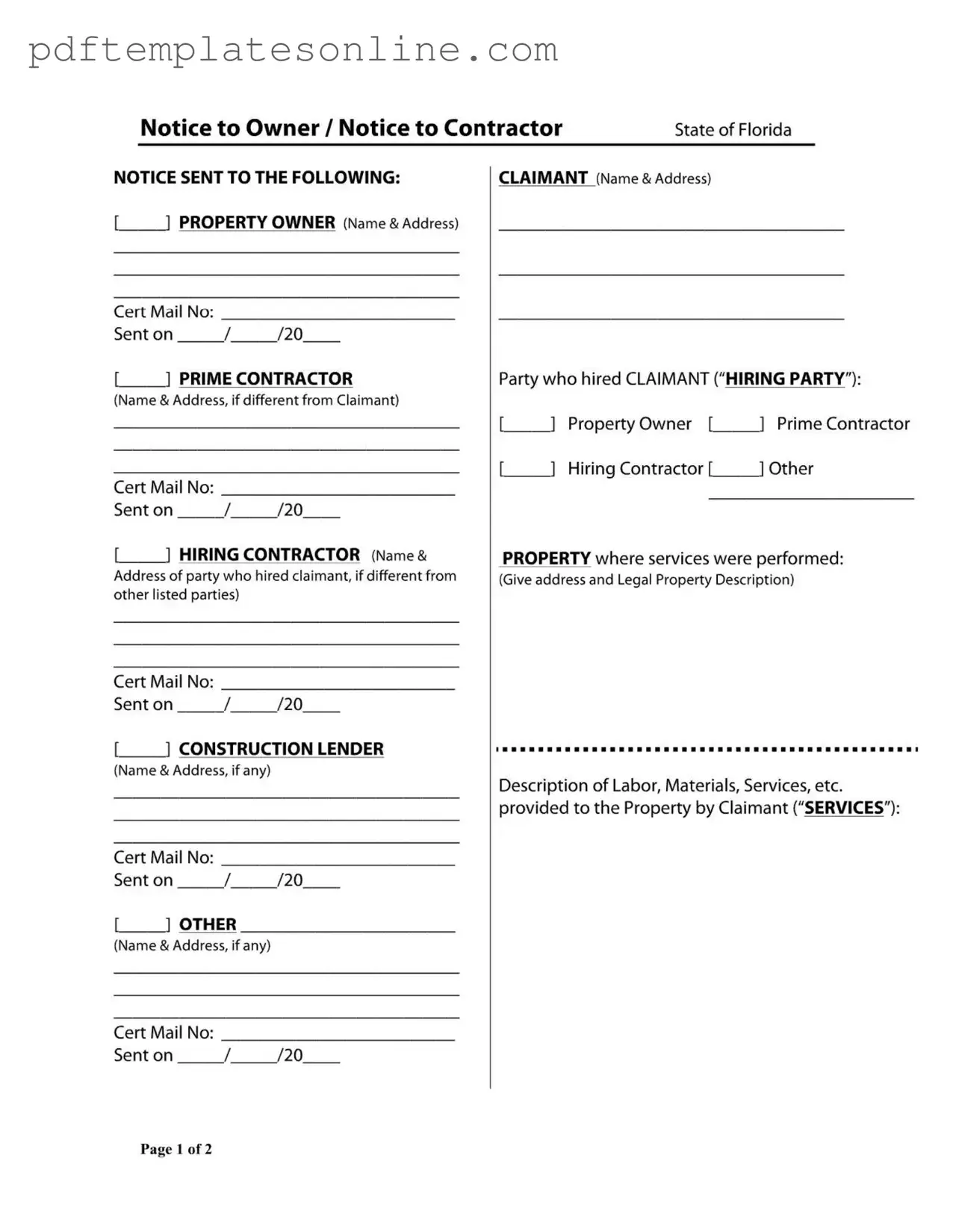Filling out the Notice Owner Florida form can be straightforward, but many people make common mistakes that can lead to complications. One frequent error is leaving out the property owner's name and address. This information is crucial for identifying the parties involved. If this section is incomplete, the notice may not be valid.
Another mistake is failing to provide accurate dates. The form requires specific dates for when notices are sent. Omitting or incorrectly entering these dates can create confusion and may affect the legal standing of the notice.
People often overlook the importance of clearly identifying the prime contractor. If the prime contractor's name and address are incorrect or missing, it can complicate any claims or disputes that arise later. It's essential to double-check this information.
In addition, many individuals forget to include the construction lender's information if applicable. This oversight can lead to issues if the lender needs to be contacted regarding payments or liens. Always ensure that all relevant parties are listed.
Another common error is not providing a detailed description of the property where services were performed. This section should include both the address and the legal property description. Incomplete information can hinder the enforcement of any claims related to the notice.
Many people also neglect to describe the services provided adequately. A vague description may not clearly convey what work was done or what materials were supplied, which could weaken any claims for payment.
Additionally, some individuals fail to sign the form. A missing signature can invalidate the notice, making it unenforceable. Always ensure that the claimant's signature is included at the bottom of the form.
Another mistake is not keeping copies of the notice and any related correspondence. It's vital to maintain records of all communications and documents related to the notice for future reference.
Lastly, people often do not seek legal advice when needed. Understanding Florida's construction lien laws can be complex. Consulting with a legal professional can help clarify any uncertainties and ensure that the notice is completed correctly.
